Most of us still remember the good old days when you would visit the nearest toy store with your friends and between sodas and snacks, you would buy one or more packs of sports cards.
As children, we couldn’t afford the more expensive memorabilia. But we could still afford to collect cards with pictures of our favorite sports teams. At the time, few of us would have believed that sports card collecting would once again become a favorite pastime during the Covid-19 pandemic.
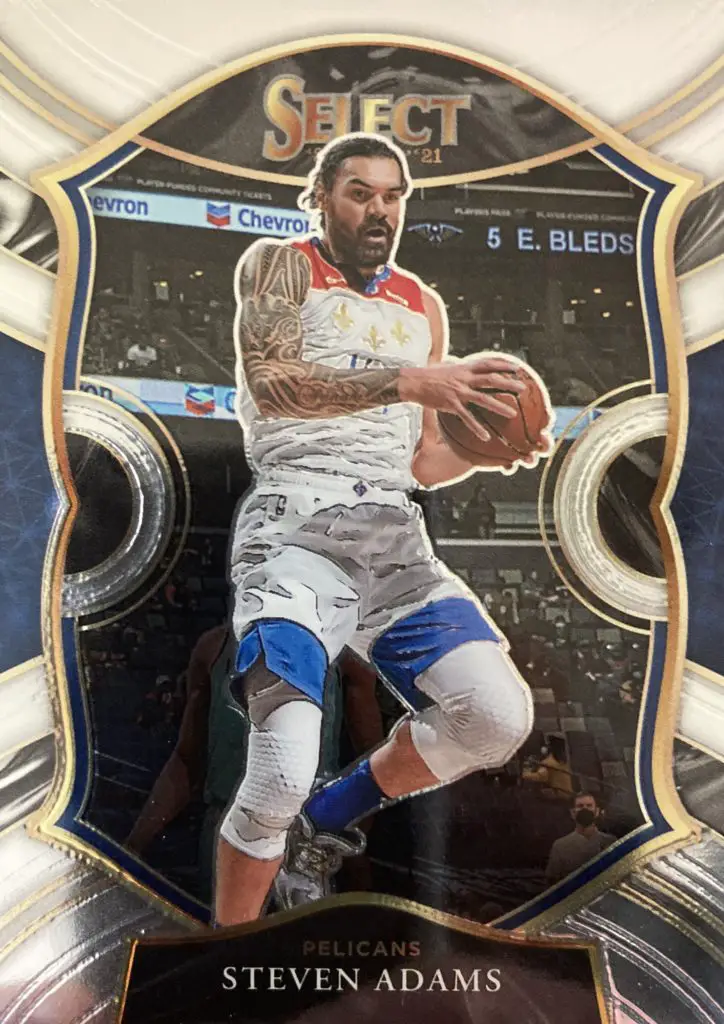
If you are ready to start sports card collecting, either for the first time or again – but this time more seriously. You will undoubtedly benefit from our beginner’s guide to sports cards collecting below. It’s a lengthy old post, so make yourself a drink and let’s get into it.
What Are Sports Cards?
Sports cards feature pictures of popular players within a particular sport. The most common types available are basketball, football, soccer, UFC, baseball, and Formula 1 leagues.
Every card has a picture of a player who is playing in that particular season. It typically depicts him or her in their team’s jersey – usually on the sports field.
How To Start Collecting Sports Cards
Before you do anything else, it’s helpful to sit down and first plan what you want to do and how you are going to do it. One of the first decisions you will have to make is which types of sports cards you are going to collect. To make that decision, you will first have to learn more about what is available.
You don’t need to do all your research before you even buy your first sports card. There’s a lot to learn in this hobby, so allow yourself the freedom to change your mind as you go along. If you over think thinks you can easily find yourself suffering from analysis paralysis. Just remember, it’s supposed to be fun!
When making a decision about which sports card to collect, ask yourself what you would get the most pleasure from. This could range from building complete sets? Autographs? Rookie cards? A particular player? You are going to invest a lot of time in this, so it’s important to like what you do.

Apart from that, you must also choose from among the many different styles of cards that are available. You can take this even further by deciding to focus on collecting sports cards from a particular team or player.
Many companies nowadays sell cards aimed at specific niche markets.
Focusing On A Specific Type Of Sport
Deciding what sport to focus on is a big part of the fun. In the past baseball cards used to be the most popular option for card collectors. In the last couple of years, however, basketball cards have taken over the top spot. With popular options such as Kobe Bryant rookie cards there’s a lot of choice. Apart from these two options, other popular types of sports cards include soccer, football, wrestling, and hockey.
There are numerous factors to take into account when deciding on the type of sport you want to focus on. For example, it might be more difficult to get hold of cards for certain sports. An example of this might be the Australian Football League (AFL).
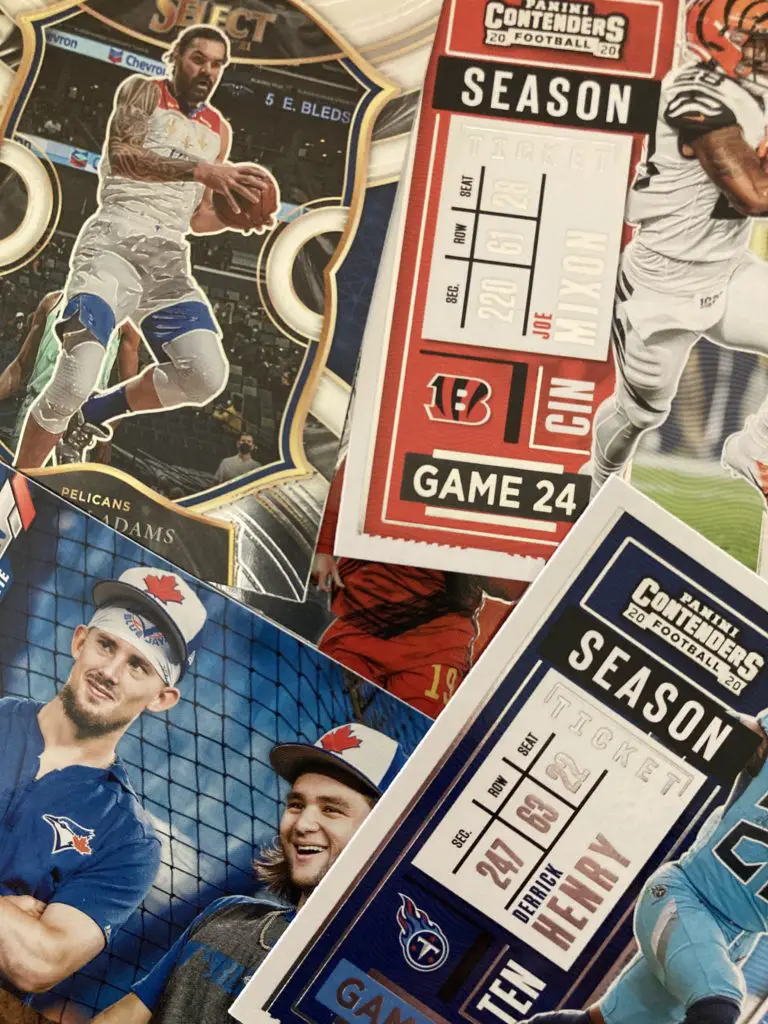
This will make collecting these cards more of a challenge. For some collectors, this only makes the whole thing more interesting and worthwhile. Others downright hate it as it can take too long to build a sizeable collection.
There is one factor that’s important to take into account here though. The more difficult it is to get your hands on a certain type of card, the bigger its scarcity value might become. And because of this, the more it might grow in value over time. But of course, it will also cost more to begin with.
A Hobby And Maybe An Investment.
If you are planning to sell your card collection somewhere down the line. Bear in mind that cards with a high scarcity value often increase in value more than others over time. Which means you could make a bigger profit. There are, however, no guarantees that this will happen.
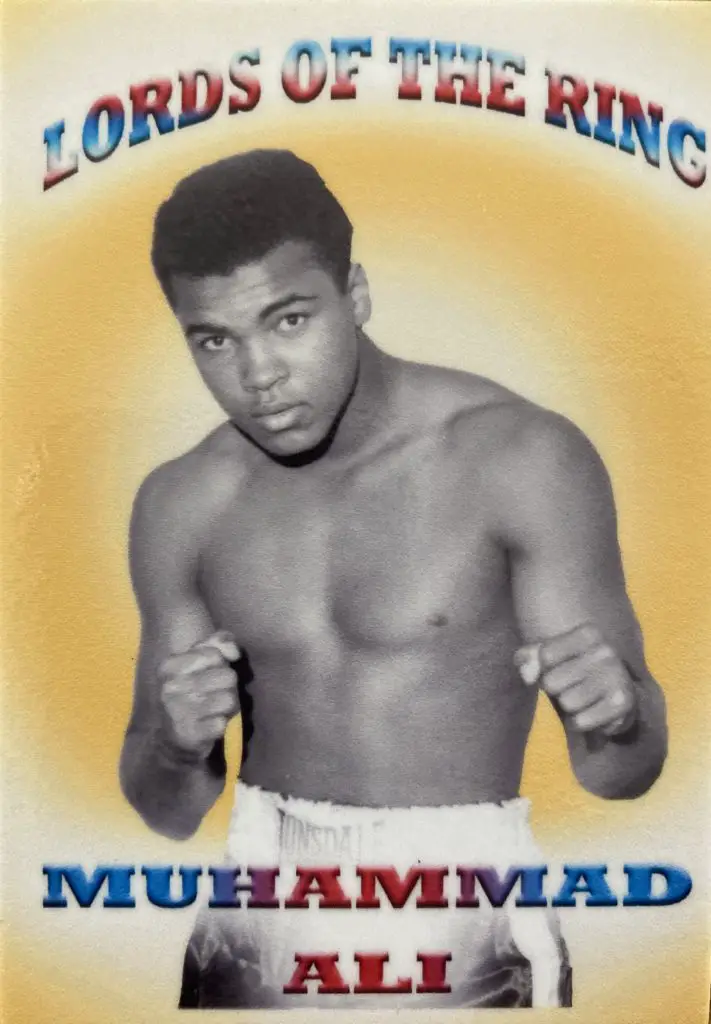
Cards that are more common on the other hand, are easier to find and they could still increase in value as time goes by. They might simply be cheaper now because they were produced in much bigger numbers. A few years from now, the demand for these cards could be higher than today while available stocks are much more limited. This could well boost their prices.
If you are only interested in sports card collecting for the sheer enjoyment of it, and not in buying and selling for a profit later, it might be better to start off with the cheaper cards.
Where Can You Buy Sports Cards?
Back in the 1980s, it was quite easy to get your hands on virtually any type of sports card you wanted to collect. Nearly all convenience stores offered packs of cards for sale at ridiculously cheap prices. Collecting these cards was, therefore, a lot easier than today. Don’t be mistaken though – It’s not as if sports cards are not being printed any longer – they are. But the market has become much more competitive and it’s nowadays quite difficult to get your hands on the most popular brands.
Although you might be lucky to get started by buying a pack or box or two of sports cards at your local convenience store, in the long run, you will probably have to do most of your card shopping online.
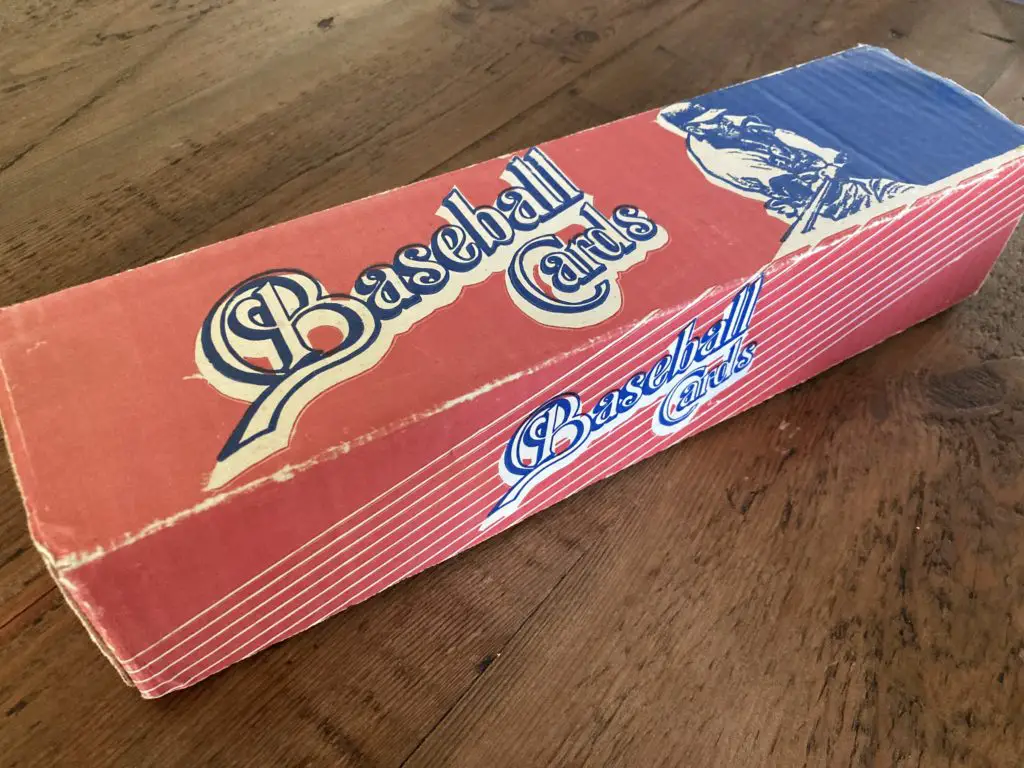
A good starting point is to check out the cards that are offered for sale on eBay. Also. do a Google search for sports card collecting and see what types of cards are currently in the news. That will give you a fairly good idea of what is currently popular among card collectors and how difficult (or easy) it would be to get the ones you would like to start collecting.
Other good options include using dedicated sports cards retailers, Facebook marketplace, forums, or the manufacturer’s website. You should be aware at this stage that if you don’t do proper research before the time, as a newbie collector you can easily get tricked and end up paying much more than the market value of the cards.
There are definitely con artists in the sports card game, so make sure that before buying you first try to find the same cards (in a similar condition) available for sale elsewhere and compare prices.
What Are The Different Types Of Sports Cards?
Full Sets Of Cards
Many collectors get great satisfaction (and some also make good money) from collecting full sets of sports cards. These complete sets typically date back a few decades, to the 1970s or early 1980s. Generally speaking, it’s actually easier to get your hands on these older full sets of sports cards than to find ones that were produced more recently. This is also why newer sets are typically a lot more expensive. If you choose to become a vintage sports card collector, this is of course good news.
A lot depends on the cards included in the set. If it contains an extremely valuable individual card, the set will no doubt be priced much higher than one without this attraction.
The reverse is also true. Sometimes you might be looking for a specific card or two but you can’t find them anywhere. And then you unexpectedly stumble upon someone who has a complete set that you know contains these cards but he or she doesn’t realize their value!
Base, Subsets, Inserts, and Parallels
A base is the backbone of any sports card set. These are the regular cards that all collections are comprised of.
A subset consists of a different card set that is mixed with the base cards in a standard pack. The cards in a subset are typically numbered and they don’t look the same as the base (i.e regular) cards.
An insert is one of the cards that form part of a subset. In other words, as mentioned above, despite the fact that it came out of the same pack, it looks totally different from the base (i.e. the regular) cards.
A parallel refers to a base card with a serial number. How it works is that every year a limited number of each card will be printed. For example, the blue/white/red parallel of the Luka Doncic was printed a limited number of times. Although it looks very much like the standard base cards, the design around the edges looks different.
Now and again parallels and inserts can be distinguished by a foil serial number printed somewhere on the sports card. If the card has been printed 100 times, for example, it might have a foil serial number of 20/100. This means it’s the 20th card out of the 100 that were produced. Even if the number isn’t printed on the card, you should still be able to learn more from the set checklist.
Unopened Packs
Many investors just adore the sense of mystery that goes with unopened packs of sports cards. These cards could vary dramatically in price, from only a couple of dollars to ten thousand dollars or more. The cards contained in such a pack and the age of the pack will play a major role in its popularity and value.
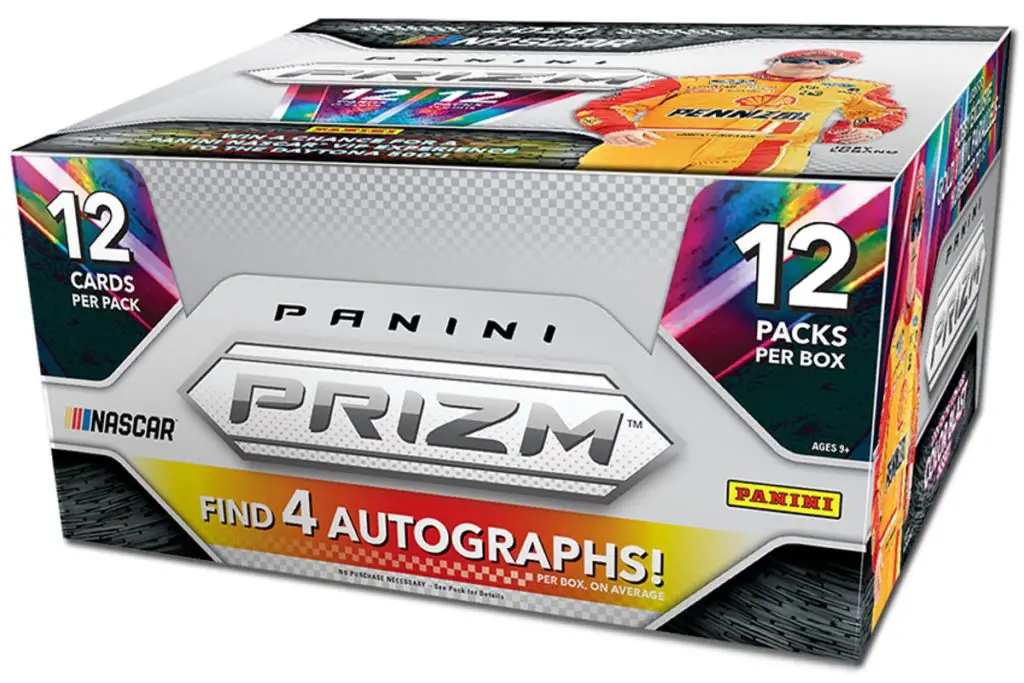
Unopened packs that date back to the 1940s and even earlier are by far the most difficult to get your hands on – and if you do, be prepared to fork out a good amount of money. The same is true if the set contains one on more individual high-value cards.
Sealed Wax
\This term refers to a sealed box of cards that is still in its original plastic wrapping. Such a box would typically contain a few dozen separate packs of sports cards. Collectors buy sealed wax boxes and packs in the same way they buy other cards. Some of them will rip them open, looking for a specific high-value card, while others will keep them as is, without breaking the seals.
The above list is not by any means comprehensive. There are quite a few other types of sports cards that might or might not interest you. The list includes relic cards, digital cards, memorabilia cards, and autographed cards. The latter in particular could be extremely expensive and will almost certainly appreciate in value over time, especially if they feature a genuinely famous sports star.
Rookie Cards
Rookie cards are always popular because these are the very first cards showing a specific player in his or her first year of being part of a major set. A good example is LeBron James, who went on to play more than 15 seasons in the NBA – but he was only a rookie once, and those sports cards will always have a special place in the hearts of collectors.
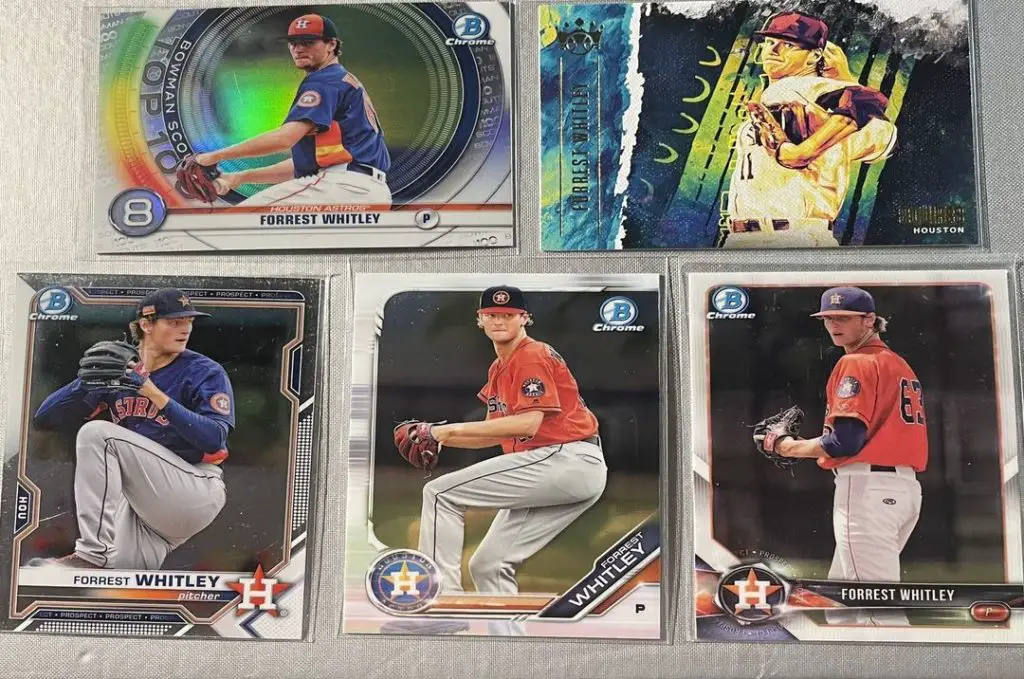
Back in the years when not as many sets were produced as today, there was often only a single rookie card for a specific player. This made collecting these cards a fairly easy process. In our time, however, various sets will often be produced – so you might for example find that there are more than a dozen rookie cards for the exact same player.
Many rookie cards nowadays also come with a special emblem, popularly known as the RC logo. It is this logo that will give you a clear indication that you are dealing with a card (or cards) from that player’s very first season.
The more time you are going to spend in the sports card collecting world, the more debates you will most likely get into over what represents a ‘genuine’ rookie card and what doesn’t. You shouldn’t let that take up too much of your time at this stage.
If you are new to sports card collecting, then just keep a look out for the RC logo to find cards from your favorite player’s rookie debut.
In the case of older cards, you are probably better off to start by researching when the player’s maiden season was, as that will give you a firm start date for when their rookie cards were released.
Tickets
We mention tickets here because even though they are different from sports cards, there are nowadays an increasing number of hobby and investor collectors who collect tickets for famous games or matches. Just like cards, they almost become a snapshot of history. If it was a game or games that you and your parents maybe went to, they can also hold fond memories
Unfortunately, match tickets are often much more difficult to come by than cards. But imagine the unbelievable feeling of satisfaction you can experience if you have been on the hunt for a specific ticket for months and you finally find it. It is also possible to get tickets graded, after which they can be slabbed up for better protection.
Patch Cards
A patch card is a collectible card that has a piece of fabric incorporated into it that came from the players team jersey or sports top.
They are also often referred to as Jersey Cards.
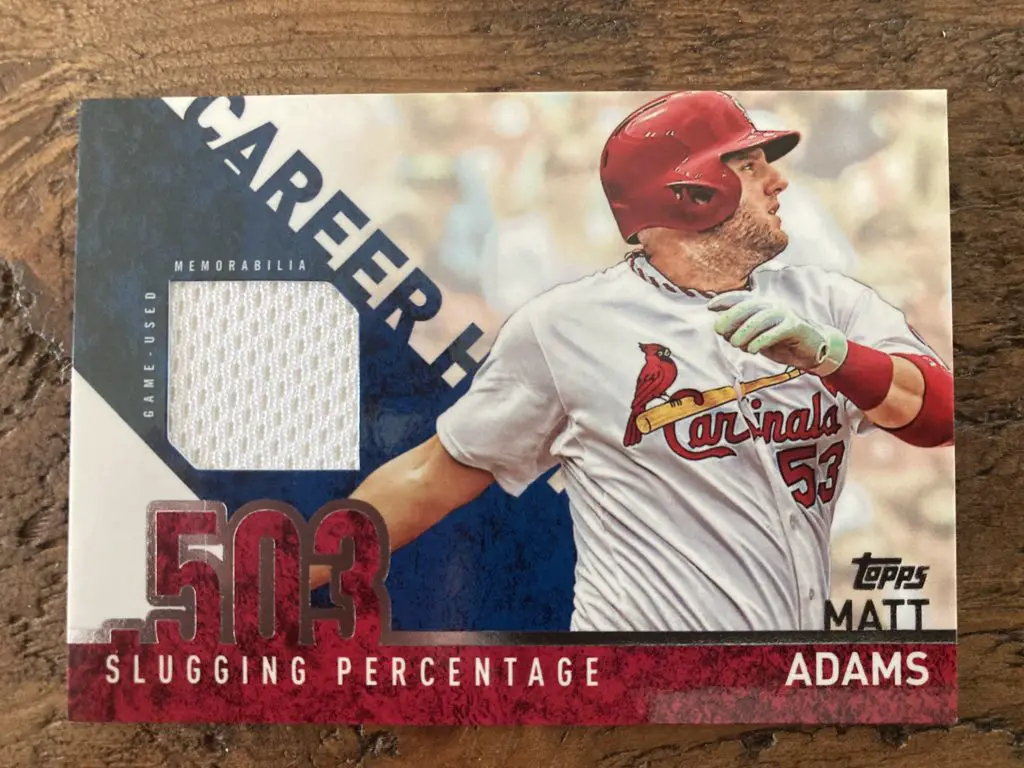
Other Factors To Consider Before Buying Sports Cards
As you probably realize by now, collecting sports cards has more to it than meets the eye. Here are a few more factors you will have to take into account before deciding whether or not to buy a specific card or cards.
The Popularity Of The Player
This is where collecting sports cards can become quite similar to betting. To a large extent, the value of a specific sports card depends on the performance of the player featured on that card. Apart from that, the performance of his team also plays a role.
As the player and his team win more championships, awards, and titles their fan base will grow – and their cards will become more popular, and more expensive. And the most popular and most valuable will typically be their rookie cards.
The opposite can also be true. If a player becomes less newsworthy over time or is involved in controversies, the value of his or her cards can often decline. Accurately trying to gauge the potential of new players, and then investing in their cards while they are still relatively unknown could be as exciting (and potentially lucrative) as day trading, gambling or crypto.
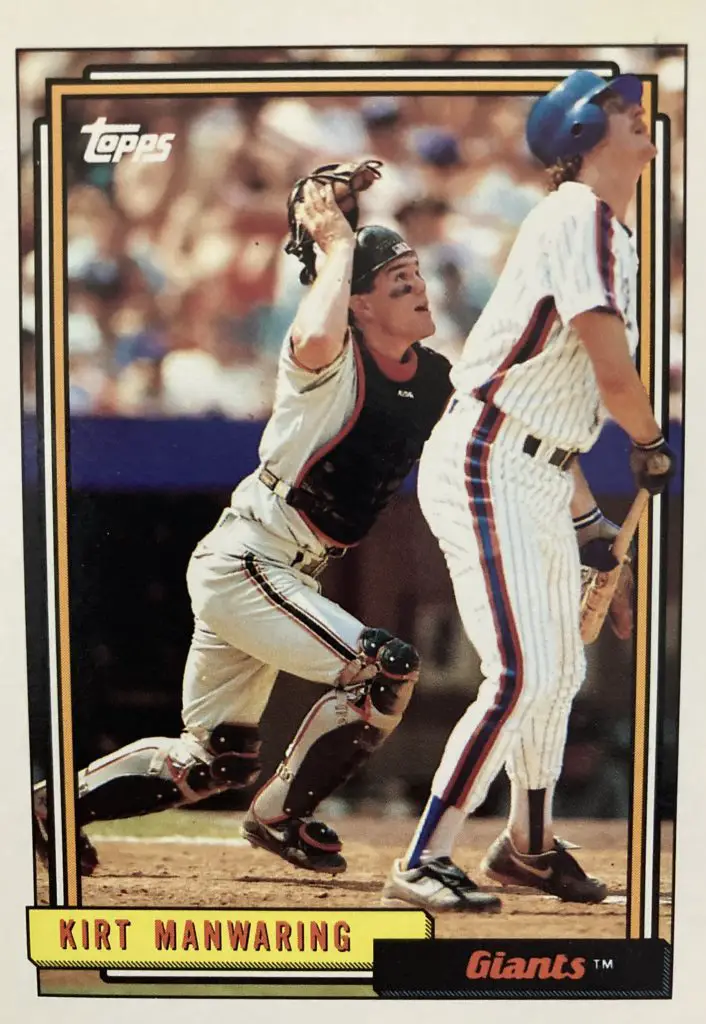
Interestingly enough, it’s not always the top players’ cards that fetch the highest prices. In many types of sports, offensive players appear to generate more interest than their defensive counterparts. And that fact could significantly boost their cards’ value over time.
In the end, it’s a matter of supply and demand. A famous player will always have larger numbers of people looking for his or her cards. This will of course boost the prices of these cards. And in many types of sports, forwards simply get more publicity than defenders. With more publicity comes fame and increased demand for their cards. That’s why a rookie base card featuring Tom Brady is priced higher than even a rare parallel card of the average reserve Quarterback.
Modern Sports Cards Versus Vintage Cards
Modern sports cards: For probably the majority of sports cards collectors, the decision on which cards to collect is motivated by one factor and one only: familiarity.
With beautiful images of players that are household names in every pack, modern cards are what often turn sports enthusiasts from fans into collectors. On the other hand, vintage cards typically feature now retired players who have not been active in the game for many years, so few collectors have ever seen them play.
Vintage sports cards: The term ‘vintage card’ refers to a wide variety of sports cards that were issued before the mid-1980s. Cards from this era are typically further subdivided into two groups: Post-WWII and Pre-WWII. There is no generally accepted cutoff point for where modern sports cards start and where vintage cards end, but most collectors accept that a card produced later than the mid-1980s no longer qualifies to be called ‘vintage’.
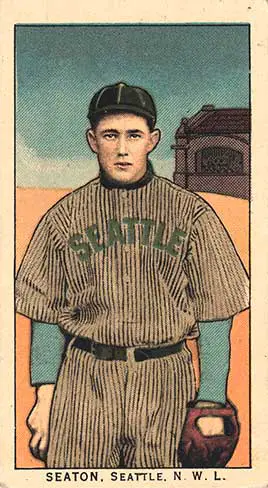
What most vintage cards have in common is their lack of bells and whistles. There are no parallels, relic cards do not exist, and chromium cards are unknown. Sometimes novice collectors mistakenly adopt the view that their relative simplicity makes vintage cards less interesting or even boring. Nothing can be further from the truth.
Being the oldest sports cards out there, pre-war cards can be the most daunting for newcomers to start collecting because these guys and girls are not used to cards that come without the abundance of information that is typically associated with modern sports cards.
Although one often finds information such a the player’s height and birthday, plus a bit of statistical data, on the backs of cards dating back to the pre WWII era, many vintage cards lack some of the core elements of their modern counterparts. The player’s name, team, position, and often also the rookie logo might not be there. In fact, a lot of older cards, and the best known cigarette cards, have very little information. The front of these cards only contains the player’s last name, their league, and the location of the team. On the flip side there is no additional information. All one would see there are cigarette advertisements.
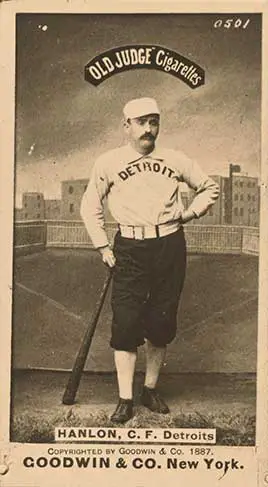
Collectors of vintage sports cards often complain about the relatively small number of cards they can choose from to collect, while the really popular contemporary sports stars typically have dozens of card sets produced every year, featuring hundreds of individual cards.
For most newbies, the only saving grace vintage cards might have is actually that there are not so many to collect. Most popular sports starts from yesteryear never had more than a couple of cards released every year because of the lower number of different sets that were being printed.
Regardless of how you choose to start your collection though, it would most likely be better if you made sure that it (at least initially) contains cards that represent both eras. Only once you know the market and your own preferences, strengths, and weaknesses better should you start focusing on one or the other.
The Role Of Grading
There’s one thing you can do to take your sports cards collection to the next level and that is to have it graded by a PSA or Professional Sports Authenticator. These guys will grade the cards on a scale of 1 to 10. This gives potential buyers a reliable indication of the condition and quality of the cards.
A great bonus is that they will also put your cards in slabs to help protect them against wear and tear. If the cards earn a top rating, it will immediately boost their value and virtually guarantees that you will be able to make a profit when selling them.
Popularity reports
Another service that many professional graders can provide is a popularity report. What this means is that they will research how many of the same type of sports cards are out there that have the same rating as yours.
As an example: let’s say they gave your 1990 Topps 336 Ken Griffey Jr. baseball sports card an 8 out of 10 rating. The popularity report will show how many similar cards are out there with the same rating. That will give you a very good idea of how scarce (or not) your own card is.
Apart from that, the higher your cards are rated, the more you will typically be able to sell them for. It’s not that unheard of for a card with a 10/10 rating to fetch nearly double the price of its 9/10 counterpart.
Quite a few auction houses will not sell sports cards unless they have been graded by a professional. This is because prospective buyers often want to look up the cards’ serial numbers to confirm that they are bidding on the genuine thing.
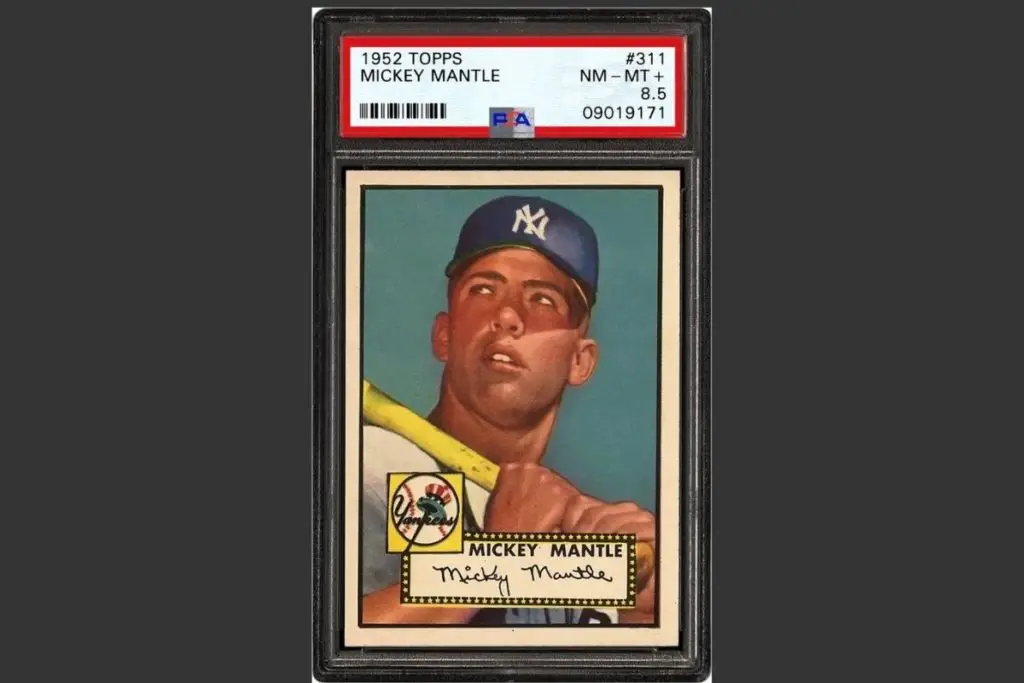
Grading is better if you are investing
If you are collecting sports cards solely for the enjoyment you derive from it, there is probably not much of a reason why you should have them professionally graded – except for curiosity value. If you are not just collecting cards for fun, however, but also as an investment, it will definitely be worth your while to approach a professional grader to get his or her official opinion about the condition of your cards.
Having them graded is also particularly important if you collect vintage sports cards. The card grading professionals will help to detect fakes (quite common when it comes to vintage cards). Fraudsters can, for example, intentionally weather and age these fake vintage cards to make them look far older. Sometimes they might also erase the ‘reprint’ markers from the cards. All of this in an attempt to artificially boost the cards value and to get you to part with your hard earned cash.
The Condition Of The Card
The condition of a sports card plays a major role in its price. The most important factors include the state of the surface, corners, edges, and centering, i.e. whether or not the image is centered correctly on the card. Sports card valuators also look at things like fraying or other damage. On the surface of the card, they look for damage caused by folding and/or scratches.
Ultimately the three main things you should look for before buying a card are the following:
Defects that originated during the printing process. Here we are talking about things like images that are off-color, irregularities in the printed lines, or any other defects that can be traced back to the printing process.
Faults that can be traced back to the cutting process. When sports cards are printed, the printing press prints a large number of prints on huge sheets of card. These are subsequently cut down to create the individual cards you and I know.
Often, however, mistakes are made during this process. To the majority of individuals these errors would be virtually unnoticeable, e.g, edges that are not straight or that are a little bit jagged. To professional collectors, however, this can dramatically reduce the card’s value.
Damage that occurred after the cards left the pack. I’d say that by far the most common types of damages are those that happen to sports cards after they are unboxed and unpacked. Examples of which can include tears, rips, creases, jagged edges, discoloration, and water damage. Fortunately, this type of damage can be avoided with proper care. After opening, for example, keep your cards in top-loaders and plastic sleeves to protect them.
All of the above are important factors to consider when determining a sports card’s condition before making an offer to the seller.
Selling Your Sports Cards
Whether you are simply collecting sports cards for the sheer fun of it, or you hope to make some money from this in the long run, sooner or later you might get to a point where you want to sell your cards. The first idea many people have is to check what their cards are listed for on auction sites such as eBay. Beware that this might give you a totally inflated idea of what your cards are worth because many sellers list their cards at exorbitant prices in the hope of catching the rookies out there.

A much better option is to look at actual selling prices. You will find these by scanning the ‘sold listings’ on just about any online marketplace. That will give you a sound idea of what cars similar to yours have sold for in the recent past.
Apps
When studying sales prices and trying to find out that value of your cards, there are a number of ways to find the correct information. There are a heap of Apps out there that can also assist. You can read a bit more about them in our post here.
If you are worried about being conned, or you just want to have an agent mediating the deal, you can also sell your cards via resale platforms such as StockX. These guys help to facilitate a clean deal and make sure both parties do what they agreed to do. In exchange for having this extra reassurance and peace of mind, you will of course, have to pay them a relatively small seller’s fee.
Another way to sell your sports cards is through one of the many moderated forums such as Sports Card Forum, Blowout Forum, or the large number of Facebook pages. Just make sure that you don’t fall foul of the group rules, as some don’t allow sales.
You can also join groups where topics related to sports cards are discussed and where it’s allowed to offer your cards for sale without paying any commissions. This can be particularly helpful because of course, you get to learn from more experienced card collectors.
Trading Your Sports Cards
If you are less interested in buying and selling cards and more interested in simply being a collector, you might still from time to time sit with cards you don’t really want. While, at the same time, there are others that you are desperately trying to find. Exchanging or trading cards then becomes a genuinely viable option. You can get rid of the cards you don’t want – hopefully for other cards that you will find useful. We all used to do this as kids.
Trading Opportunities Include:
Forums. Sports cards are regularly traded on online forums. If you choose this route, make sure to find a moderated forum where the administrators help to make it a safe space to trade, buy, and sell cards. Of course, you will still have to do your own homework as well. You don’t want to end up exchanging a card you later find out was worth maybe hundreds, or even thousands of dollars for one worth less than $10.
Your nearest card store. Many hobby and card stores have popular and/or rare cards that they are looking to trade. If you are looking for a specific card or cards, you may be able to trade up your cards for them. And if you get to personally know the staff members, they might offer you deals that will genuinely benefit both parties.
Card shows. An even more exciting option is to attend a card show or convention such as the National Sports Collectors Convention which regularly takes place in Atlanta. Here, dealers and collectors get together to discuss news and other topics related to all the different types of sports cards. And attendees have an opportunity to trade directly with a relatively large number of collectors. As a collector, you might even be able to get your hands on a rare item such as an autographed card or cards. Set yourself a spending limit though as it is very easy to get carried away at these places!
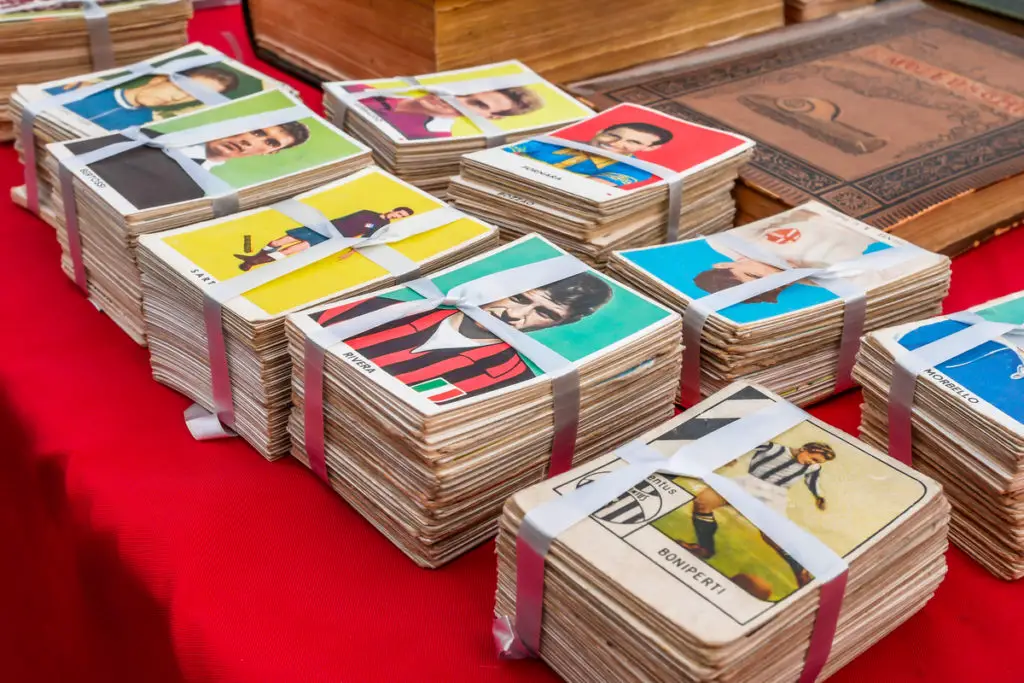
How To Look After Your Sports Cards and Protect Them Against Damage
As we’ve seen earlier in this article, the condition of a card plays a major role in determining its market value. It’s in your own best interest, therefore, to make sure that your cards remain in pristine condition./
When considering how to protect your cards, a couple of things have to be considered. In the first place, you need to learn how to prevent damage to individual cards. Secondly, you need to know how to store whole sports cards collections in such a way that they don’t use too much space and can’t get damaged.
When it comes to individual cards, you are going to need one or more of the following:
One-Touch cases. Use these for storing your most precious cards. They are a lot more sturdy than the options discussed below and therefore they offer much better protection. Of course, they will cost a bit more, but it’s well worth it.
Penny sleeves. These consist of a clear plastic sleeve meant for a single card, quite similar to the small plastic pockets we used to have at school. The material is often quite flimsy but it will nevertheless help to protect the card against accidental scratches and spills.
Top loaders. These are single cards sleeves similar to the penny sleeves discussed above. Where they differ from the latter is that in this case the plastic is thicker and stronger and should do a better job of protecting your cards.
Although the above might initially appear to involve unnecessary costs, in the long run, it will be money well spent. Even the slightest damage to a really valuable card can reduce its value by thousands of dollars.
How Should I Store My Sports Cards?
Now that your cards are protected by one-touch cases, penny sleeves, or top loaders, you’re not going to just leave them lying around on your desk are you? You need dedicated storage space. While storing a few cards isn’t a problem, when your collection starts growing bigger it might be difficult to find enough space.
Below are a couple of ways in which you can easily store your card collection:
Display cases and cabinets. Nowadays there are many beautiful cases and cabinets on the market for stylishly displaying sports cards and memorabilia in any room of your house, not unlike an art collection.
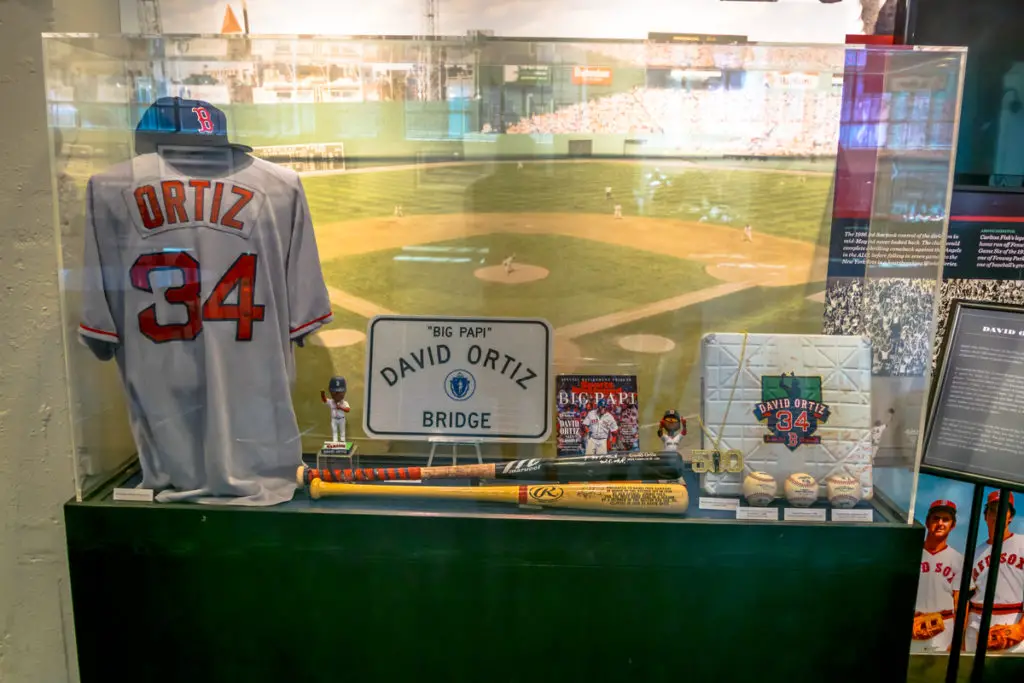
Special card boxes. These are cardboard boxes that have been designed specifically for storing card collections. Normally it’s a fairly large box with a few compartments where the cards can be stacked in rows. If this is your preferred option, ensure that the compartments aren’t too small to store your cards that are in top loaders.
Folders. Folders are another excellent way to store a sports card collection. These are particularly suitable for the cheaper cards that you’ve bought just for your own collection.
Safety deposit boxes. If you ever pay more than $10,000 for a sports card, you will hopefully understand that it can’t just lie around the house. For really valuable cards, a safety deposit box is probably your best option.
3rd Party storage facilities. There are many firms that will store your cards for a reasonable monthly fee. A good example is top-of-the-range auction houses. Storing your cards with them will mean that you can no longer just sit and look at your collection all day. But if you want real peace of mind about a high-value sports card collection, this might be your best option.
In the final instance, there isn’t a one-fits-all storage solution for protecting and storing sports card collections. An important consideration is how much your collection is worth. The more you paid for the cards, the more effort you should make to ensure that they won’t be damaged and/or stolen.
Final Tips For Aspiring Sports Card Collectors
And here are our final couple of top tips to help make you a better sports card collector:
Make Sure You Are Having Fun
We know it’s tempting to start collecting sports cards with the hope of becoming rich overnight. However, if collecting cards is not something you really enjoy to begin with, it’s not very likely that you will be able to keep up your motivation.
If you hate scouring the internet for obscure cards from yesteryear and you can’t stand trying to find a buyer for a card you believe is worth much more than you paid for it, you should perhaps rethink wether card collecting is the right thing for you.
If the idea of hunting for that rare card from the 1960s and then negotiating with the owner makes you excited though. you might be on the verge of a very rewarding hobby that could eventually even help you to make some (or perhaps even a lot of) money.
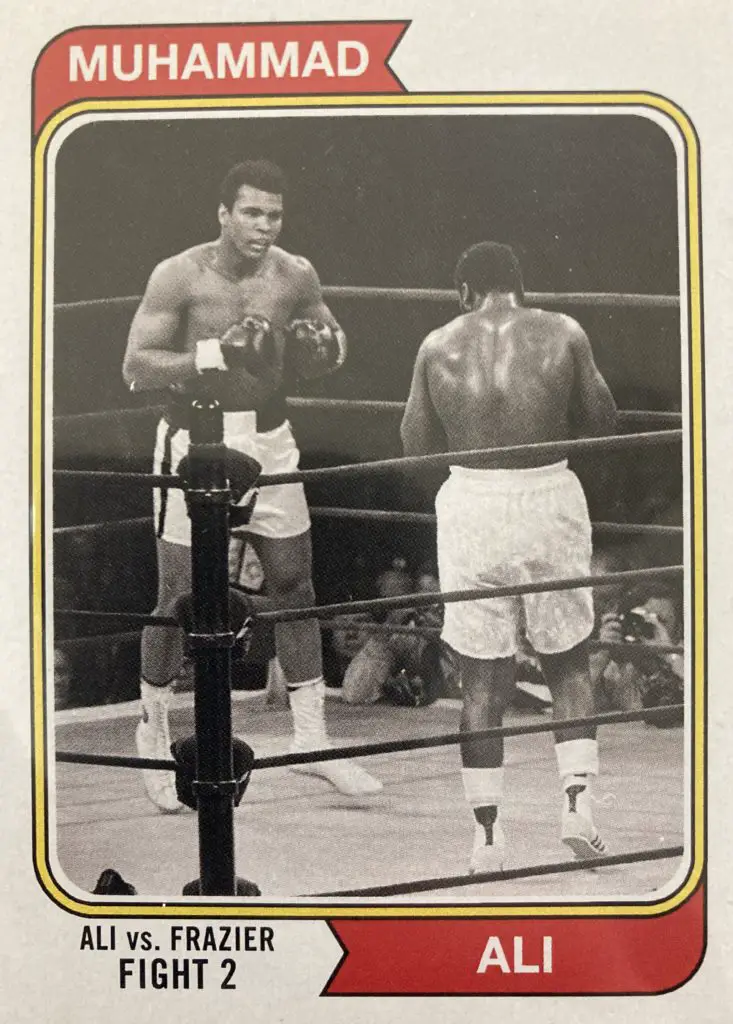
Collecting cards is also a great way to meet like-minded people on podcasts, blogs, and social media. The writer has made many wonderful friends in the process.
None of know what the future holds
Just remember that sports cards aren’t the same as stocks that generate revenue. They are only valuable when and if they are considered to be valuable by other collectors. But there is no magic way to tell whether the price of a specific card or set of cards will increase in the future. You might be spending hundreds of dollars, only to find that prices have remained stagnant or even dropped.
You should, therefore, only spend money that you can afford to lose. And never buy a card that you have no intention of keeping (and enjoying) as part of your collection. If you are forced to make a quick sale because you need to realize some cash quickly, then your chances of losing money are greatly increased.
Do Proper Research Before You Start
While it’s great to be enthusiastic, don’t let your emotions run away with you. Do your homework before you buy even a single card. If a card is, for example, advertised as a ‘rookie’, don’t just assume the seller is honest. Do a web search and check when that player actually played in his first tournament and whether a rookie card or cards were in fact released.
While You Are Still Learning The Ropes, Only Buy From Sellers With a Good Reputation
Nowadays the biggest part of sports card selling and buying takes place online. This can be dangerous because you will often not even know the name of the seller. This is where a place like eBay can play an important role because they offer excellent support to their buyers.
PayPal is an Ebay payment option still and they offer great buyer protection. So it can be a safer way to purchase if you are worried about the authenticity of a card that you can only see in a photo. Also, if it gets lost in transit, the responsibility lies with the seller to prove the item was delivered.

If the seller wants you to do a bank transfer, send cash or do a ‘Friends and Family” PayPal transfer then be very wary. If it turns out to be a scam, you’re most likely not going to get your funds back.
Platforms and Market Places
Also, be a little cautious when it comes to Facebook Marketplace. There’s very little in the way of buyer support and once again you might end up losing your money if you run into a scammer. Or the description doesn’t match the grade of card you were expecting.
Other options include platforms such as StarStock. At companies like these you can purchase sports cards without ever taking delivery of them. The cards can be stored in their ‘vault’ on your behalf if you don’t want to take delivery of them. In this case, the reputation of the company or platform you choose should be your prime concern so do your due diligence and always read the fine print to make sure you understand everything.
Don’t Buy An Expensive Card Before Properly Checking Its Condition
This is particularly important if you plan to make a profit on the card you buy.
It’s often not easy to make a proper assessment of a card’s condition, particularly if you are purchasing online or if the owner keeps it behind glass or isn’t happy to give it to you for inspection. It’s even more difficult if you have no experience with buying sports cards.
You should, for example, watch out for any indication of damage or excessive wear and tear. Of course, a 90-year old card will show some signs of wear, given its age. You should nevertheless do some research about what conditions are regarded as acceptable by other collectors and base your decision on that. Any signs of severe damage will dramatically reduce the value of a sports card, so make sure you don’t pay too much. That’s why we recommend that when you are buying your first cards, you take an experienced buyer with you to teach you a few tricks of the trade.
That does not mean though, that you should never purchase a damaged card. If you are not into making a profit but you are purchasing it solely for the nostalgia and enjoyment you get from collecting cards, it might not bother you too much. Please try to remember, however, that there might come a time in the future when you want to sell your collection – even if you currently have no such plans to do so.
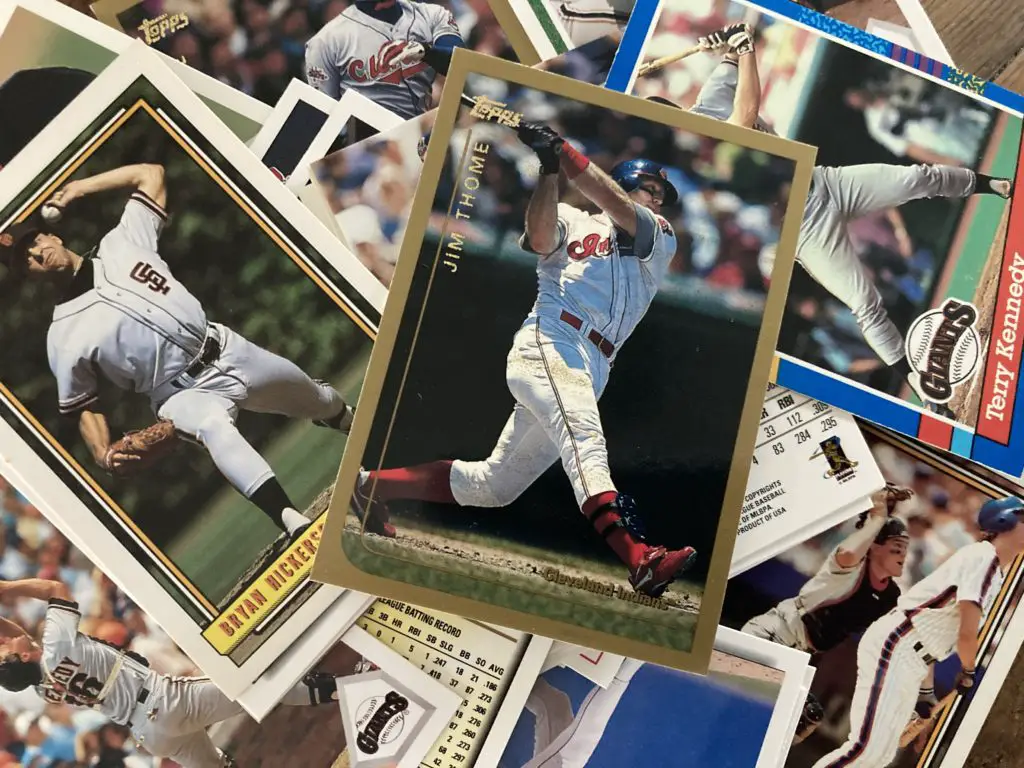
- Mac Jones Rookie Cards – Our favorite picks - October 21, 2022
- FOTL Sports Cards: What It Means, And Why You Should Care - October 17, 2022
- Best Picks For Juan Gonzalez Rookie Cards - October 3, 2022

